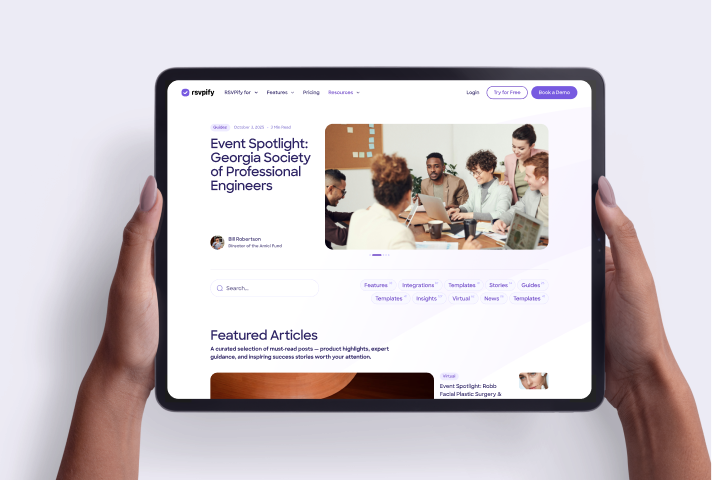Back to all posts
October 26, 2018

The web offers a seemingly endless supply of event and project planning tools, and sometimes it can be a bit overwhelming. Since the project planning process already requires plenty of your energy and time, browsing through the various options on the web is often frustrating to an event or project planner. With this in mind, we've gathered five of our favorite event and project planning tips and tools for you to consider using for your upcoming planning needs.
Perhaps the most useful project planning tool out there, Dropbox offers project planners a comprehensive array of planning tools that can help you with everything from organizing files, to sharing media, to managing and communicating with a team of collaborators. Some of the features we love the most:
Whether your project is a small one or a big one, Dropbox offers a variety of plans that can provide some or all of these features for you and make your next project planning process a much easier one.
For big projects and events, often you need to coordinate with a number of teams and contributors, and getting everyone on the same page can be tough. Fortunately, scheduling meetings and setting up appointments can be made easy with the wide variety of digital scheduling apps available, both free and paid. Whether using traditional business-tailored products like Outlook or Google Calendar, or new dynamic apps like Calendly, using digital scheduling and calendar apps allow you to:
Obviously there are a ton of different options for coordinating social media around either a project or event. In this category, you'll probably end up integrating a variety of platforms, like Twitter, Facebook, Instagram, Youtube, and others, in order to maximize the exposure for your event or product launch. While each platform offers its own positives and negatives, a few best practices can help you make the most of social media:
One of the best new trends in tech in both the event planning and project planning spaces is the proliferation of live video streaming and conferencing apps. While there are a number of solutions for mobile live streaming, all offering benefits of their own, here are a few reasons you might want to consider incorporating this tech for your next project or event:
For projects that will require a demonstration, launch party, or even a convention as the end result, a powerful event management platform is just as important as the planning process itself. Fortunately, RSVPify offers a comprehensive set of features that streamline planning any event you may need around your project:
Have any project planning or event planning tips of your own? Feel free to share them with us in the comments below, or reach out to us via social media!
This is a sponsored post for Dropbox. All opinions are my own. Dropbox is not affiliated with nor endorses any other products or services mentioned.
About the Author
Get the latest product updates, event planning tips, and industry insights — straight to your inbox.
You can unsubscribe at any time. Your email will only be used to send RSVPify updates and will never be shared.
